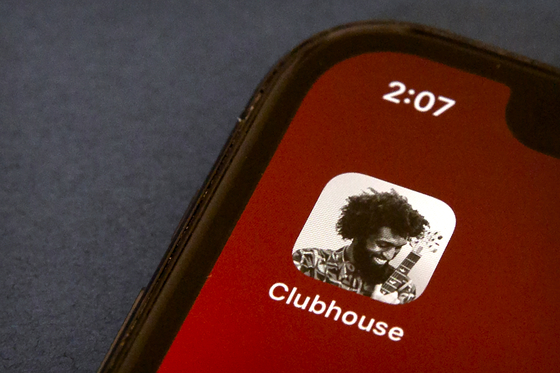![Interactive voice-based SNS clubhouse [AP=연합뉴스]](https://i0.wp.com/pds.joins.com/news/component/htmlphoto_mmdata/202102/14/cd58b39d-7268-4f0a-bde2-28c27d3ecb9f.jpg?w=560&ssl=1)
Interactive voice-based SNS clubhouse [AP=연합뉴스]
The’Club House’, an interactive voice-based social media (SNS) from Silicon Valley, is gaining popularity. Audio-based SNS with a similar concept is also being added, and the market for paid audio content is also growing. In the future, there is also an analysis that audio can become a major means of communication instead of text (Facebook, Twitter) or video (Youtube).
First of all, the club house is receiving the most attention in Korea. Clubhouse is only available on Apple’s operating system, iOS, and it is gaining so much popularity that more people are looking for used iPhones.
According to Sejong Telecom’s affordable phone business brand Snowman on the 14th, the number of new subscriptions with used iPhones in the second week of this month (8-10 days) increased 400% from the first week (1-3 days). Snowman said, “It seems that the number of used iPhone terminals left in the closet for clubhouse use has increased.”
Twitter has also expanded to audio
‘Discode’, a voice-based messenger that preceded the clubhouse, is also seeing the light belatedly. Discord was originally released as an exclusive chat app for gamers. However, from last year, general users began to flow in with the slogan “your chat place”. Currently, it is mainly used as a stock information exchange platform for ants in the United States.
‘Copyish fm’, which released a beta version last year, also provides a voice-based service. Copysh fm, which is similar to a radio broadcast, allows listeners to participate in real time when hosts (hosts) call each other and start broadcasting.
![New voice-based SNS copy fm. [카피쉬 fm 캡처]](https://i0.wp.com/pds.joins.com/news/component/htmlphoto_mmdata/202102/14/24cd48b2-0afe-401d-8afb-3610eb36a4a6.jpg?w=560&ssl=1)
New voice-based SNS copy fm. [카피쉬 fm 캡처]
Existing social media is also expanding its feet with audio services. Twitter, a representative text-based SNS, will provide a service similar to the clubhouse under the name’Spaces’. Host and follower create a separate chat space and exchange voice chat. All of the participating followers can listen to the conversation, but only the person designated by the host can speak. Twitter announced that it had acquired podcast company Breaker last month for the launch of Spaces.
![Spoon Radio, a real-time personal audio broadcasting platform. [사진 스푼라디오]](https://i0.wp.com/pds.joins.com/news/component/htmlphoto_mmdata/202102/14/486523f2-8599-4c01-8359-e08a72d6d846.jpg?w=560&ssl=1)
Spoon Radio, a real-time personal audio broadcasting platform. [사진 스푼라디오]
Especially popular with Gen Z who are familiar with multitasking
In Korea, the audio content market is growing, centering on Naver Audio Clip and Patpan. ‘Spoon Radio’, a real-time personal audio broadcasting platform, is famous as an application that Generation Z (young people born in the mid-1990s to early-mid 2010s) listen to before going to sleep. Unlike podcasts, which mainly broadcast recordings, it is centered on live broadcasting. The listener sponsors the host with an item’spoon’ purchased through in-app payment. Launched in 2016, the following year, the item sales amounted to only 2.3 billion won, but last year it jumped to 83.8 billion won. It has grown more than 30 times in three years.
Audiobook contents such as Naver Audiobook, Willa, and Millie’s library are also expanding rapidly. Users pay a monthly subscription fee and can use all the content or purchase a single copy. Last year’s sales of Naver Audiobooks, which are purchased in single copies, increased 160% compared to the previous year. An official from Willa explained, “Gen Z is strong in multitasking, but audiobooks seem to be attractive in that both hands can freely do different things while listening to content through their ears.”
“The future of SNS, maybe in audio”
What is the reason for the resurrection of audio, which was once treated as a declining industry because of video? In the industry, the development of related technologies such as Bluetooth earphones and artificial intelligence (AI) speakers is the basis for convenient two-way communication. There is also an analysis that the fact that fatigue accumulated from exposure to videos pouring out on YouTube and TikTok has fueled the demand for audio content.
MIT Technology Review, run by MIT in the United States, predicted that “new’hip’ (popular) applications are again making voice as a means of communication,” and “the future of social media could be audio.”
Reporter Kwon Yujin [email protected]
